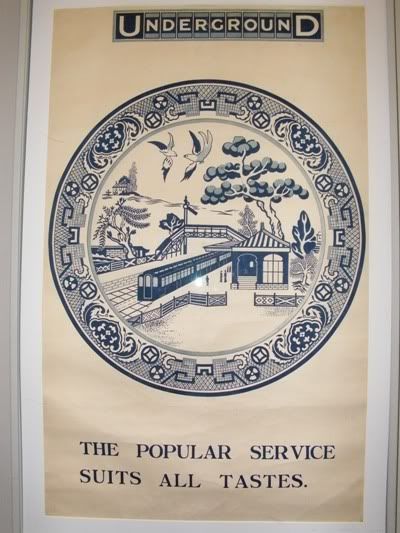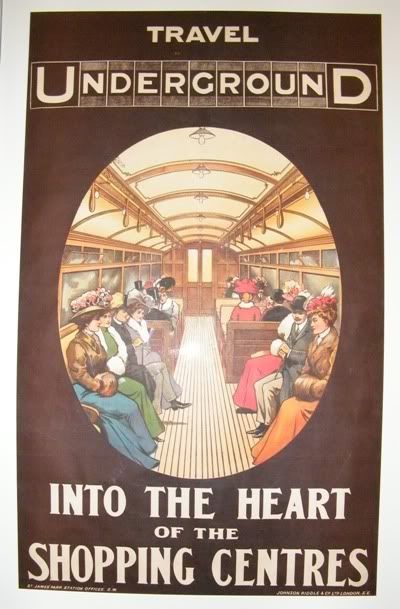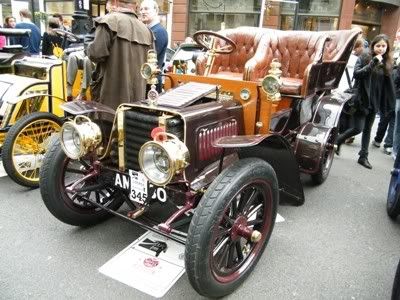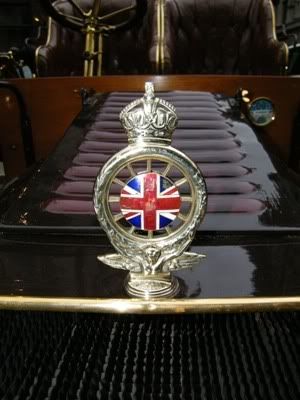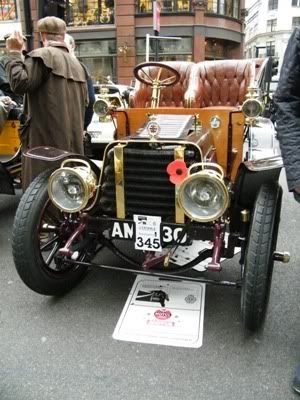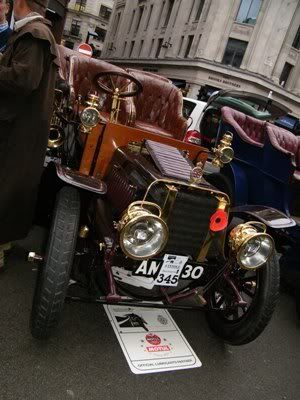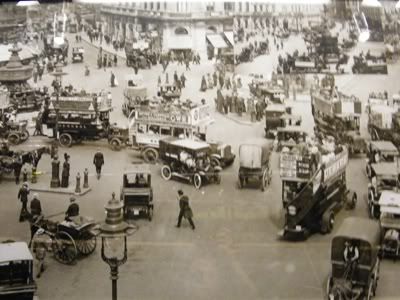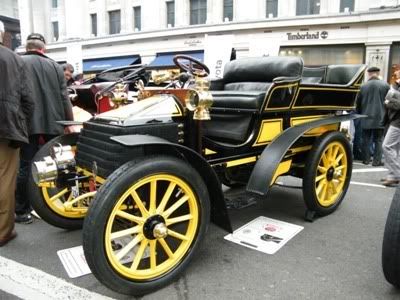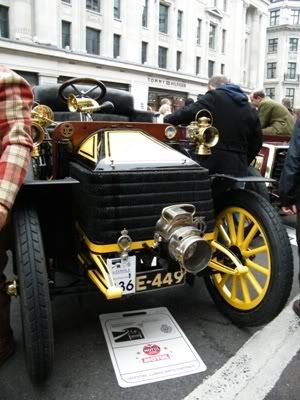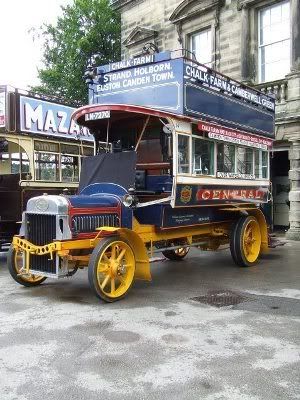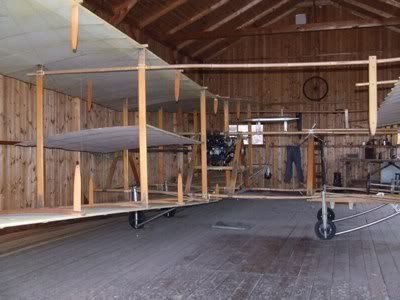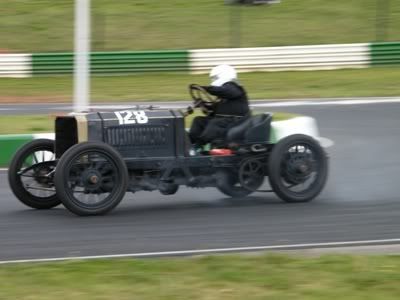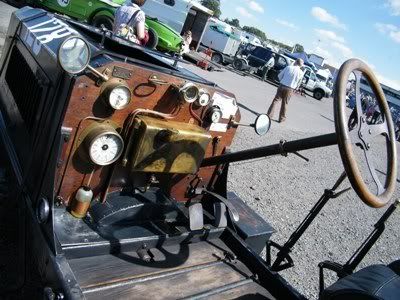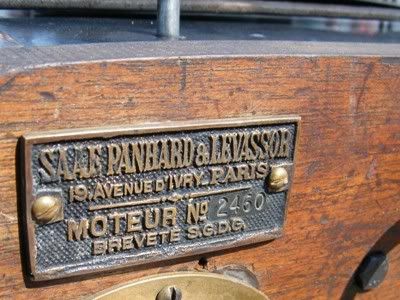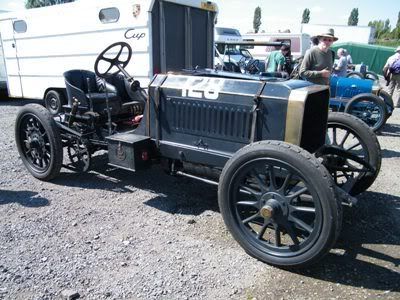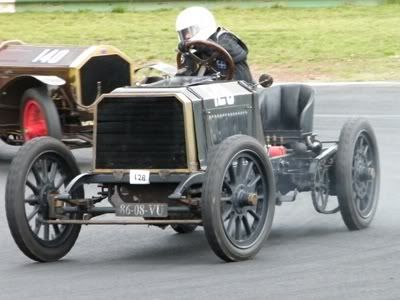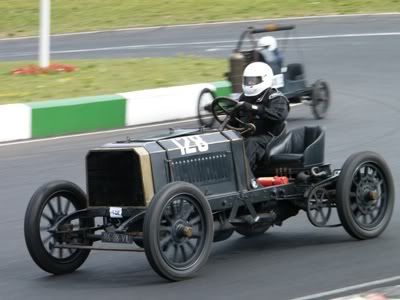'The Popular Service Suits All Tastes'
A blog about the Edwardian era in the UK - objects, buildings, people, literature, film and all other aspects of the Edwardian era (covering 1901-1919)

Monday, 2 January 2012
Saturday, 31 December 2011
Travel Underground Into The Heart of the Shopping Centres, 1908
London Underground poster dating from 1908 - seeming as the January sales are imminent, the timing of this post is rather apt
Wednesday, 28 December 2011
Sunbeam 12hp Car, 1903
Founded as a bicycle business in Wolverhampton, Staffordshire in 1887 by John Marston, like other bicycle manufacturers he was one of the first motor car producers. This is a good example of an early Sunbeam, a 1903 example fitted with a Tonneau body
Monday, 26 December 2011
Sunday, 25 December 2011
Saturday, 24 December 2011
Wolseley 10hp Car, 1903
This is a Tonneau bodied 10hp, 2 cylinder Wolseley dating from 1903. Wolseley started by making three wheeled vehicles, and started making four wheel cars in 1899. The company was a very successful early British car manufacturer, and were bought by Vickers (the armaments firm) in 1901
Thursday, 22 December 2011
Leyland X2 Motor Bus, 1908
This is the oldest surviving Leyland vehicle in the world - a Leyland X2 Motor Bus, built for the London Central bus company in 1908. Part of the Mike Sutcliffe collection of restored early Leyland busses, this brightly coloured early survivor was seen at the Crich Tramway Museum's Edwardian Weekend in June 2008
Wednesday, 21 December 2011
Roe I Biplane, 1907
The Roe I Biplane was the first powered aircraft to be designed, built and flown in the UK. It was designed by Alliott Verdon Roe to claim a prize offered by the Brooklands Automobile Racing Club and based it on a powered model with which he won a £75 Daily Mail prize at Alexandra Palace in 1907. When first built it was powered with a 9hp JAP engine, but was too underpowered to get airborne, but Roe borrowed a 24hp Antoinette engine with which he was able to get the Roe I airborne, for the first time completing a short hop off the ground on June 8 1908. Unfortunately it was damaged beyong repair after several more hops when Brooklands race track attendants dropped it when lifting it over a fence. This non-flying replica was built in 1988 and is housed in a replica of Roe's shed built for the aircraft
Tuesday, 20 December 2011
Panhard-Levassor S4M, 1903
Established as a car company in 1887, Panhard et Levassor (later Panhard-Levassor), was one of the most successful motor car companies before the outbreak of the First World War. This 1903 built S4M racer sports a 13500cc engine, and in the Edwardian Race at the 2011 VSCC Mallory Park race meeting was the oldest competitor, with the secon largest cubic capacity engine (the largest had an engine from a Zeppelin!)
Monday, 19 December 2011
North Eastern Railway and the Hartlepool Bombardment, 1914
December 16th 2011 saw the 97th anniversary of the Bombardment of the Hartlepools (see previous post here http://electric-edwardians.blogspot.com/2011/12/hartlepool-bombardment-december-16-1914.html). On December 16th 1914, German warships shelled Scarborough, Whitby and Hartlepool in an attempt to lure the Royal Navy out into battle. Whitby and Scarborough were undefended but Hartlepool was defended by a coastal battery of six inch guns and was able to fight back and cut short the planned hour long bombardment by twenty minutes. On the 15th I was at the Ken Hoole archives researching the North Eastern Railway in the First World War, and as on the 16th I attended a ceremony at the memorial for those killed in the bombardment, I researched the effects of the Hartlepool bombardment on the NER - all information is from The North Eastern Railway Magazine
At West Hartlepool Station, shortly after the Liverpool service departed a shell smashed through the station wall at the south end of the 'up' platform. The same shell damaged the brake of the train due out at 0850, and the passenger line to the south was cut in several places. At first the staff ensured their families were safe, but after ascertaining that they were, they returned to their posts.
At Hartlepool Station only four staff plus the stationmaster were working at the time of the bombardment. Mr Walker, a ticket collector, gave first aid to a sailor on the SS Phoebe in dock close to the station, who had been mortally wounded by shrapnel. Mr Llewellyn, a Porter, made stretcher and ambulance materials ready, and Mr Willey, a Porter, gathered women into the waiting rooms away from falling glass, as roof squares were constantly falling, especially at the west end of the station.
In the docks, shunters and engine drivers stayed at their posts until it was foolhardy to stay there. In many places the rails were cut by shells or blocked by debris. Railway operations for the rest of the day were mainly disrupted by both the damage to portions of track and damage to telegraph wires.
Two North Eastern Railway men were killed in the bombardment. George Dring, a mooringman, was wounded in the chest by a piece of shell and died later in the day. With around a dozen others he took shelter behind the dock masters offices . A shell struck one of the crabwinches which controlled the dock gates, smashing it, and wounding six or seven men and killing four, including George Dring. Mr Dring joined the North Eastern Railway in 1894, originally working on a dock dredger used by the Dock Engineers Department. In 1904 Dring was appointed to the position of mooringman (a Dock Pilot, in the Dockmaster's Department). He was known as a quiet and well conducted man, and left a widow and six sons and daughters, two of which were still at school.
William Sarginson, a Shunter at West Hartlepool, was the second NER casualty. He died in Hospital on January 4th 1915 from wounds received in the bombardment. He was on duty at Stag Island in the docks, and was dealing with wagons when he was struck by fragments from a shell. He called to his mate, Mr R Coates, for assistance, which was promptly rendered. When he was being carried away on Mr Coates' back he was again struck, injuring Mr Coates as well. William Sarginson suffered twenty injuries in total to various parts of his body. Sarginson was 22, unmarried and well respected and had been in North Eastern Railway since 1913.
Following the raid, on June 18th 1915, thirty-four members of North Eastern Railway local ambulance classes were given medals by General Manager Sir A Kaye Butterworth for distinguishing themselves under fire during the bombardment. After the June 18th presentation it was discovered that two ticket collectors had also rendered rendered special services but had escaped official recognition. Sir A Kaye Butterworth agreed these men should have medals obtained for them also, and the two men, Mr James P Devlin and Mr James Walker were presented with the medals by General Superintendent Major HA Watson on September 21st 1915.
At West Hartlepool Station, shortly after the Liverpool service departed a shell smashed through the station wall at the south end of the 'up' platform. The same shell damaged the brake of the train due out at 0850, and the passenger line to the south was cut in several places. At first the staff ensured their families were safe, but after ascertaining that they were, they returned to their posts.
At Hartlepool Station only four staff plus the stationmaster were working at the time of the bombardment. Mr Walker, a ticket collector, gave first aid to a sailor on the SS Phoebe in dock close to the station, who had been mortally wounded by shrapnel. Mr Llewellyn, a Porter, made stretcher and ambulance materials ready, and Mr Willey, a Porter, gathered women into the waiting rooms away from falling glass, as roof squares were constantly falling, especially at the west end of the station.
In the docks, shunters and engine drivers stayed at their posts until it was foolhardy to stay there. In many places the rails were cut by shells or blocked by debris. Railway operations for the rest of the day were mainly disrupted by both the damage to portions of track and damage to telegraph wires.
Two North Eastern Railway men were killed in the bombardment. George Dring, a mooringman, was wounded in the chest by a piece of shell and died later in the day. With around a dozen others he took shelter behind the dock masters offices . A shell struck one of the crabwinches which controlled the dock gates, smashing it, and wounding six or seven men and killing four, including George Dring. Mr Dring joined the North Eastern Railway in 1894, originally working on a dock dredger used by the Dock Engineers Department. In 1904 Dring was appointed to the position of mooringman (a Dock Pilot, in the Dockmaster's Department). He was known as a quiet and well conducted man, and left a widow and six sons and daughters, two of which were still at school.
William Sarginson, a Shunter at West Hartlepool, was the second NER casualty. He died in Hospital on January 4th 1915 from wounds received in the bombardment. He was on duty at Stag Island in the docks, and was dealing with wagons when he was struck by fragments from a shell. He called to his mate, Mr R Coates, for assistance, which was promptly rendered. When he was being carried away on Mr Coates' back he was again struck, injuring Mr Coates as well. William Sarginson suffered twenty injuries in total to various parts of his body. Sarginson was 22, unmarried and well respected and had been in North Eastern Railway since 1913.
Following the raid, on June 18th 1915, thirty-four members of North Eastern Railway local ambulance classes were given medals by General Manager Sir A Kaye Butterworth for distinguishing themselves under fire during the bombardment. After the June 18th presentation it was discovered that two ticket collectors had also rendered rendered special services but had escaped official recognition. Sir A Kaye Butterworth agreed these men should have medals obtained for them also, and the two men, Mr James P Devlin and Mr James Walker were presented with the medals by General Superintendent Major HA Watson on September 21st 1915.
Subscribe to:
Posts (Atom)
